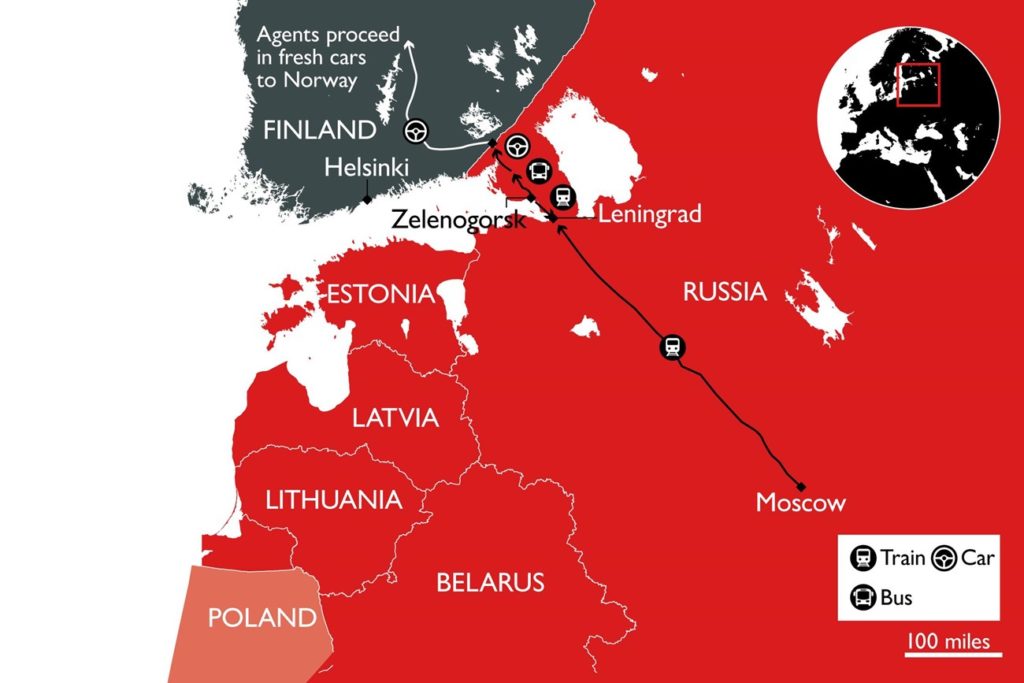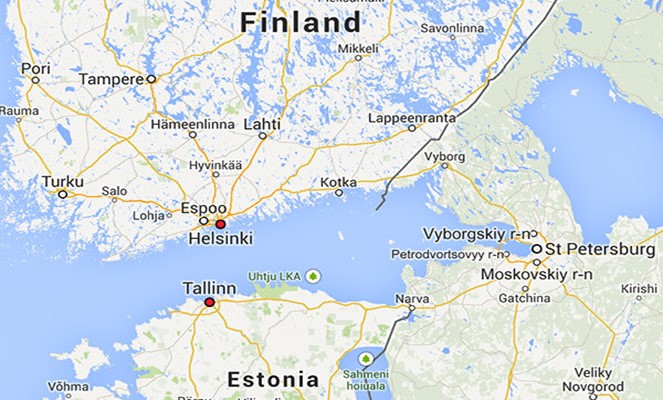

Author: Kent Moors, Ph.D.
Hollywood retains a number of flawed assumptions about our Cold War abilities against the USSR. Unless providing a faithful accounting of a story told by somebody who was in the Great Game, Tinseltown usually opts for the more dramatic but less realistic options.
One of these continues to be the idea that we were good at getting people out of the Soviet Union. It is called the exfiltration myth and it permeates much of the fiction surrounding the Cold War.
So let me set the record straight. While US intel was able to remove folks from other places behind the Iron Curtin (i.e., the Warsaw Pact countries of Eastern Europe), and had a much greater win rate if the target could first make it onto a controlled delegation to a Western city like Rome, Vienna, or Lisbon, that did not translate into moving somebody straight out of Soviet territory.
0, as in zero, nada.
That’s the number of successful US-engineered extractions from within the USSR in the 41 years considered the heart of the Cold War (from the beginning of the Berlin Blockade on June 24, 1948 to the Wall coming down on November 9, 1989).
Other Western intel agencies fared little better, although the Brits were able to extract their most important ever in-place spy – KGB Colonel Oleg Gordievsky – in July of 1985. This operation (codenamed Pimlico) was the highest-profiled and, for the KGB, most embarrassing grab.


Gordievsky is now approaching 83 and lives at an undisclosed location in the UK under another name.
That the MI6 success happened early in my time of living in Moscow obliged I carefully and completely stay away from anything that could be considered compromising. Immediately following Gordievsky’s escape, the KGB introduced a heavy-handed increase in making matters more difficult for foreigners operating in what were considered “sensitive” positions.
As I have written in earlier Classified Intelligence Brief Spy Tale entries (first in “Setting the Stage in Moscow,” May 12, 2021), I lived for an extended period in Moscow while holding a position at an institute of the Soviet Academic of Sciences. The post was an official one (held in my own name) with the invitation coming from the Soviets. Nonetheless, it still meant I was subject to oversight and surveillance.
All of that became more visible and intrusive after the Gordievsky affair and, as a new kid on the block, I just kept my head down.
My intel responsibilities focused upon a single operation, one that involved a particular target and was slowly moving toward a determination on the individual’s bona fides and importance. It was compartmented and separate from other ops running from the CIA Station at the US Embassy, administered via its own insulated chain of command.
That gave me some flexibility and a reduced likelihood of being compromised should something else the Agency was running fall apart.
Beyond that, I am still unable to discuss any particulars, even though the time limit has expired and there no longer appear to be any security considerations remaining. This operation would lead to several changes in my life and I continue insisting that “mother” relax what I consider unjustified restrictions on telling this story (and others). That discussion has now moved up to higher pay levels.
But back to today’s tale.
The route MI6 used to get Gordievsky out started with a train ride from Moscow to Vyborg, in far northwestern Russia, 24 miles from the Finnish border. After a brief bus trip into the center of the picturesque medieval town, Gordievsky made has way to a rendezvous with three UK diplomatic cars traveling to Finland. He was hidden in a specially designed crawl space below the trunk in one of them and moved across the border.


Families of foreign embassy personnel were periodically allowed to travel to Finland for shopping. That was the rather thin cover used to mask the exfiltration.
There were several inspection locations as a vehicle drew close to the border. These included the use of dogs and rarer inspections of bags and luggage (rare because these would immediately result in strong diplomatic protests).
The mission should have been a failure. These were well-trained KGB border troops. However, the families traveling to Finland included babies. There was a rumor circulated afterwards that several dirty diapers were placed in the normal trunk location above Gordievsky to dissuade the guards and dogs from investigating further.
The British exchanged intel received with the CIA while the agent codenamed “Hetman” was in Moscow and, for a period, as the head of the rezidentura (local KGB headquarters) in London. But they refused to identify the source. Nonetheless, some at the Agency concluded it had to be Gordievsky. The decision by MI6 not to tell Langley who Hetman was may have saved his life. At the time, Aldrich Ames – the most damaging KGB mole ever to work within the CIA – was the director of the agency’s Soviet and Eastern European division (SE). He would certainly have informed Moscow (as he had with several other strategically placed agents).
The success of Pimlico enticed some thinking back in the States about trying to exfiltrate some of our own assets.
Throughout my career, I was not usually involved in the development and maintenance of agent networks. This involved the recruitment and tasking of foreign citizens to spy against their own countries. Throughout the Cold War, this was the main directive of an intelligence organization. My responsibility, on the other hand, was in counterintelligence. I watched the other guys, assessed their activities, and played our own version of D&D (denial and deception).
Nonetheless, there were those inevitable times when the paths crossed. Now while living in Moscow, I had instructions strictly to avoid contact with our Russian agents (and was not in “the loop” on most of their identities anyway). But there was a bitter episode and it ended quite badly.
Agents are only of value if they remain in place. Once they are extracted, they quickly are of little use. They need to be persuaded to stay well after they want to leave. Frankly, agents are used significantly beyond whatever their recruiters had promised. In the case of those in the USSR, that usually ended up badly.
In this case, for reasons well beyond my need to know, a decision was made “on high.” An operation was to be launched to get an agent out of the Leningrad region. He was located about 120 miles southeast of Vyborg, the town of Gordievsky fame. By this time, the Vyborg connection was no longer tenable. Patrols had been strengthened and everything crossing the border was subjected to exhausting searches.
There were a few details in this ill-fated plan that required somebody who was not detailed to the embassy. That meant the use of an American officer in Moscow who was not there under official (that is, diplomatic) cover, a status referred to as a NOC. I qualified.
My part in this affair was to evaluate several proposed exit routes. The two most promising involved moving up Karelia (the Soviet and now Russian region) abutting Finland and in the far north Norway, or extracting from Tallinn, the capital of Estonia (then one of the three Baltic republics in the USSR).
The Karelian option turned out not to be tenable. It required extensive travel in heavily militarized areas with little opportunity for any local base. Even if a path could be found across the border, the logistics would require a larger team and activities in a part of the USSR where we had little in the way of a support structure.
So, it became Tallinn by default. The city is southwest of Vyborg across the Gulf of Finland and almost directly 50 miles south of the Finnish capital of Helsinki.


It remains one of the most attractive places I have ever visited, combining a rich tradition of merging cultures and distinctive architecture.


It also had the advantage of being a short ferry ride from Helsinki. Of course, the other side certainly knew that as well. Tallinn during Soviet times was one of the most intensively guarded ports in the USSR.
I traveled there (with “Sergei” – my KGB shadow introduced in earlier Spy Tales – and another of his colleagues in tow) on one of my approved internal visits. I spent some time walking the quaint streets that appeared to be right out of a fairy tale.


I also visited the small port. Then and today, the Tallink Silja Line ferries to Helsinki embark from Terminal D pictured below. The plan was to move the agent to Tallinn and let the ship take him to Helsinki.


Designing such adventures was not my bailiwick. It was handled by others. But I had a very bad feeling about all of this. As my expected report indicated upon return, the ferries were under extensive surveillance, with KGB border personnel and local police all over the ships. There was no way any passenger could get on that ferry who was not either Finnish or put there by the Soviet security apparatus.
So, the decision was to infiltrate him on as a crew member.
Tallink had been the primary ferry line from Estonia to Helsinki and elsewhere in Scandinavia since 1957. The company had established a business arrangement with the KGB to ferry its personnel and supplies while providing intel on other ports and procedures. Under the accord, the company had leverage to crew its own vessels, subject to oversight, and would operate under an unusual profit margin for the Soviet period.
We “borrowed” an Estonian asset run by what is today called the Säkerhetspolisen (Swedish Security Service, or SÄPO) but was then operating under the less tongue-friendly name of the Rikspolisstyrelsens säkerhetsavdelning (abbreviated RPS/Säk). The agent happened to work in the personnel and staffing office for Tallink.
Papers were cut for our agent along with photos and a work record. He was put on the list for deck ferry duty.
The agent received permission from his Soviet government employees to visit relatives in Narva, about halfway to Tallinn, and then took a quick bus ride the rest of the way to the terminal. He registered at the personnel office as a regular crew member designate and went on board a ferry leaving that evening for Helsinki.
We had visual proof that our agent was standing on the ferry foredeck as it departed. He was never heard from again. Within a few hours, the RPS/Säk agent also disappeared from the face of the earth.
It was an unmitigated disaster. I would have no involvement in, nor would I ever hear of, another exfiltration attempt.
There was an after-action report (especially necessary when things go so this far south so quickly). The confidential conclusion was that the plan was in all likelihood scuttled by Sergei Ivanov. He was at the time the KGB rezident in Helsinki, but on his way out after the Gordievsky episode. His career should have died then and there.
But he had been a classmate of anther KGB officer who just happened to end up President of Russia. Under Vladimir Putin’s protection, Ivanov became Russian Defense Minister in 2001, Deputy Prime Minister in 2007, and chief of staff of the Presidential Administration in 2015. Putin finally removed Ivanov in 2016 as a sacrificial political lamb in response to US charges of Russian attempts to influence the 2016 American elections (in which Ivanov was a strong proponent). Ivanov remains under US sanctions.


Back in 1986 (when the Tallinn op dissolved) Ivanov was probably tipped off by somebody else in Helsinki, Tallinn, within Tallink, or perhaps even by Ames. And his career was spared.
I have never felt comfortable contributing to the disappearance of somebody working for us. I never met this fellow, had no idea what he looked like, or knew anything about his family. Ditto for the Swedish agent. They just vanished.
Toward the end of my active field career, I was asked by a new trainee how you deal with such a thing happening. I just told her you need to live with it.
“What if you can’t,” she asked. I replied, “Well, that may oblige a reconsideration of your government service objectives, “adding with a smile, “Maybe the Department of Agriculture, where the main question is whether the grain comes in on time.”


Dr. Kent Moors
This is an installment of Classified Intelligence Brief, your guide to what’s really happening behind the headlines… and how to profit from it. Dr. Kent Moors served the United States for 30 years as one of the most highly decorated intelligence operatives alive today (including THREE Presidential commendations).
After moving through the inner circles of royalty, oligarchs, billionaires, and the uber-rich, he discovered some of the most important secrets regarding finance, geo-politics, and business. As a result, he built one of the most impressive rolodexes in the world. His insights and network of contacts took him from a Vietnam veteran to becoming one of the globe’s most sought after consultants, with clients including six of the largest energy companies and the United States government.
Now, Dr. Moors is sharing his proprietary research every week… knowledge filtered through his decades as an internationally recognized professor and scholar, intelligence operative, business consultant, investor, and geo-political “troubleshooter.” This publication is designed to give you an insider’s view of what is really happening on the geo-political stage.
You can sign up for FREE to Classified Intelligence Brief and begin receiving insights from Dr. Moors and his team immediately.
Just click here – https://classifiedintelligencebrief.com/






